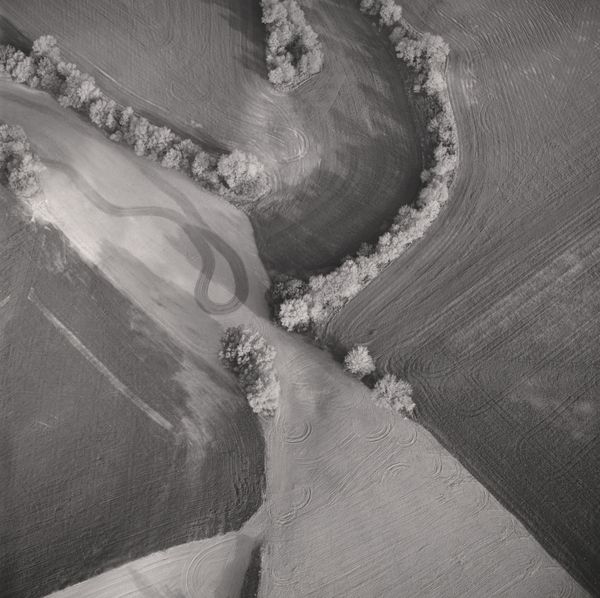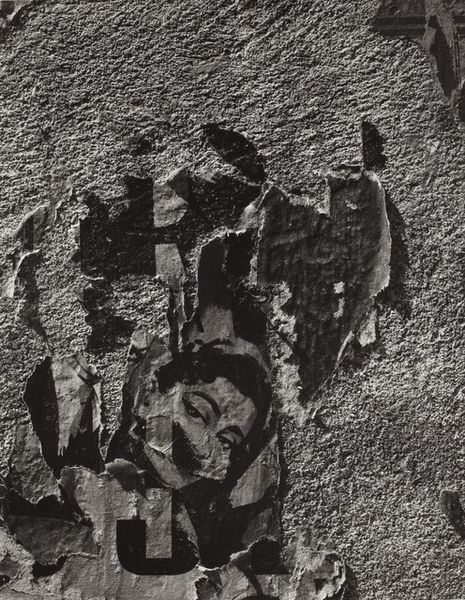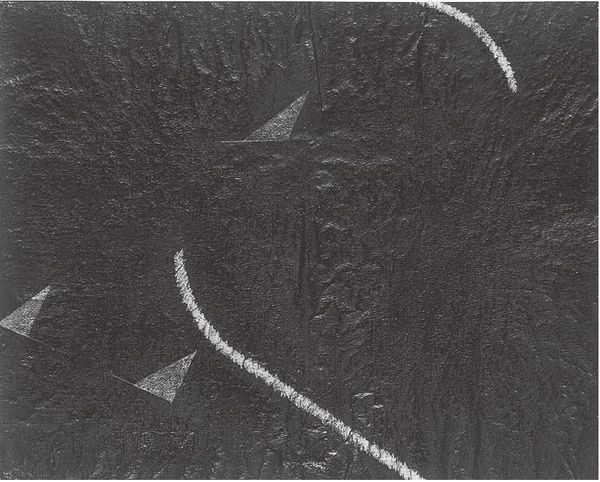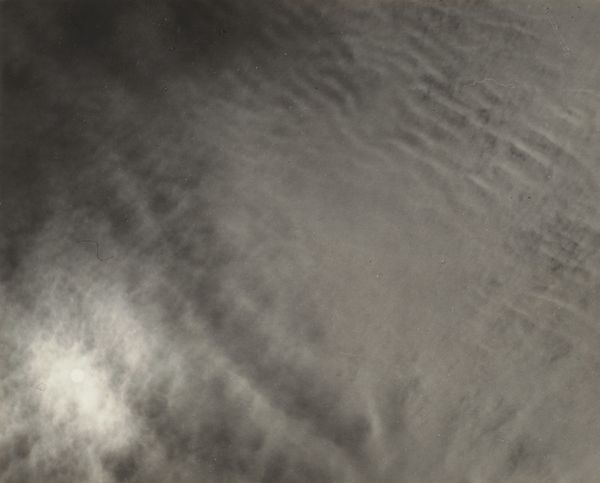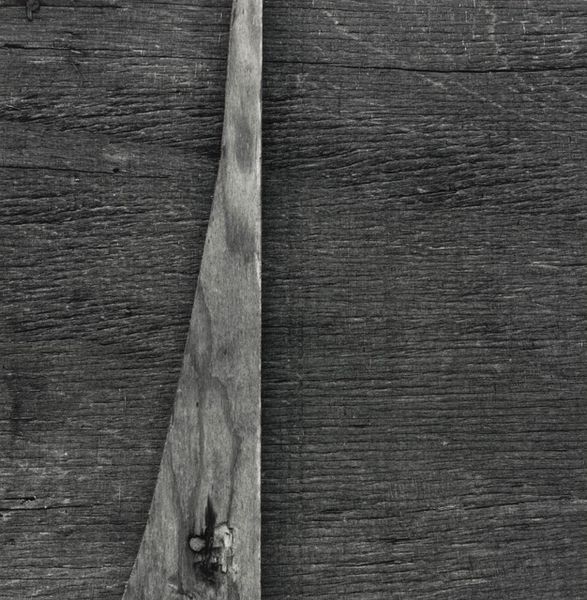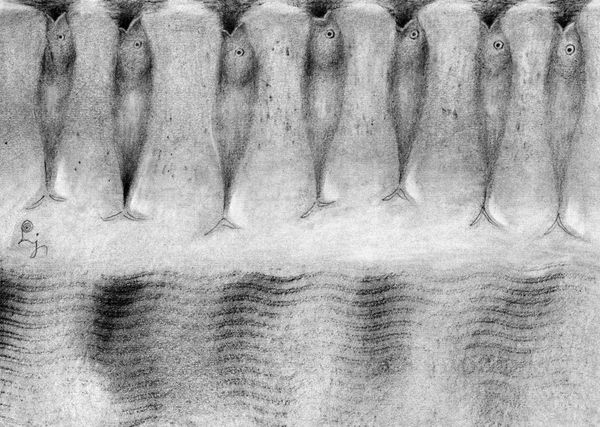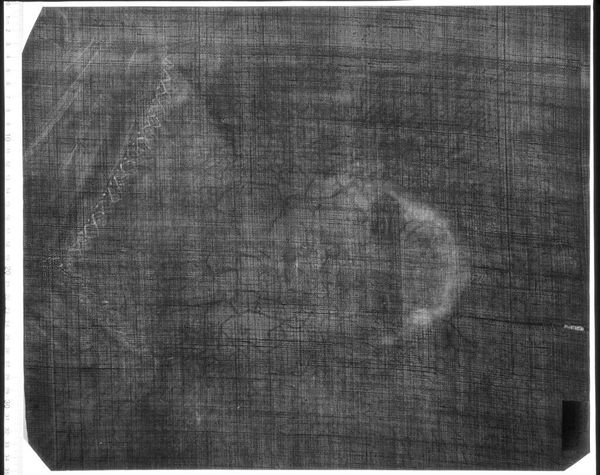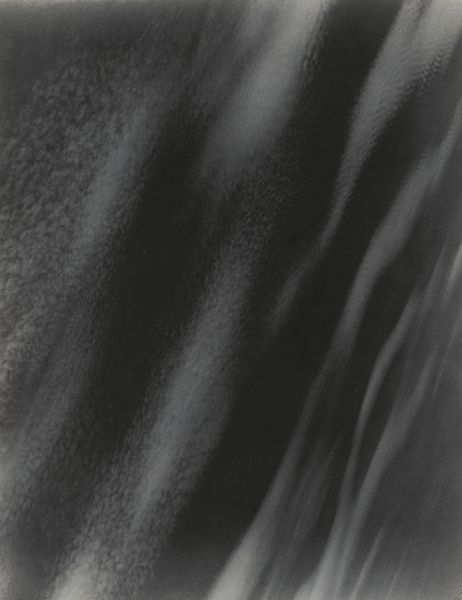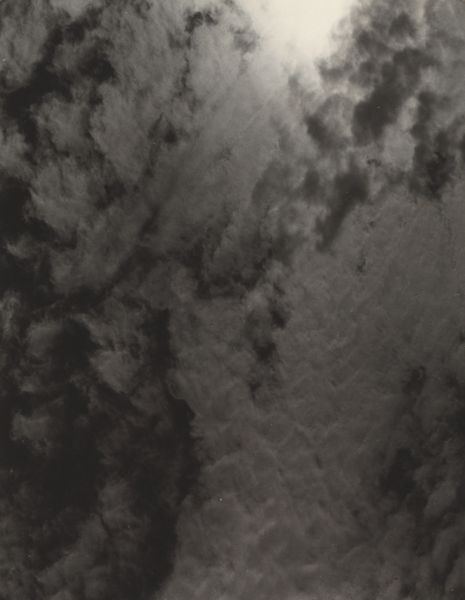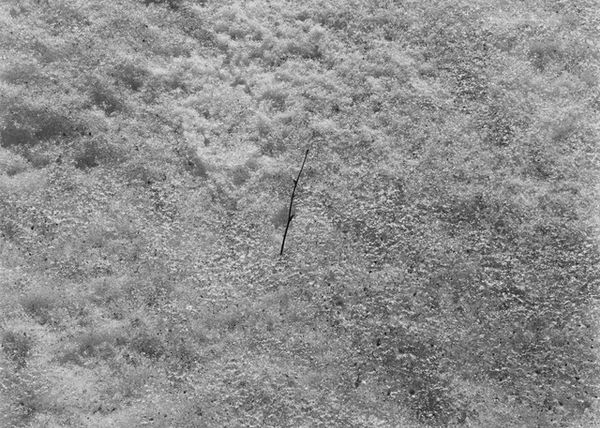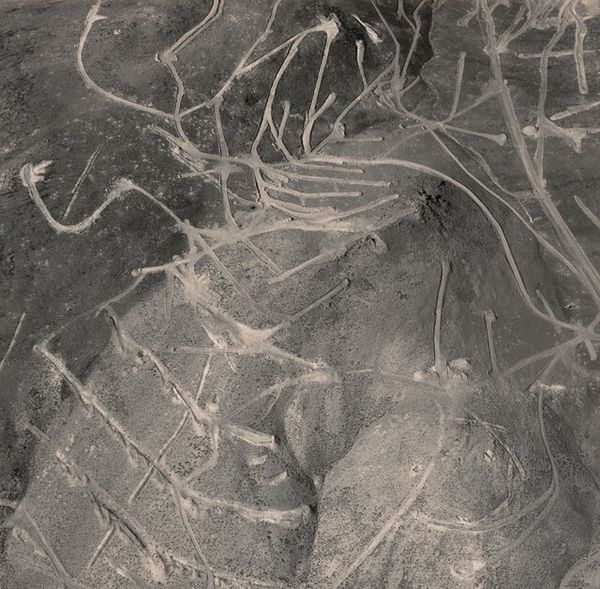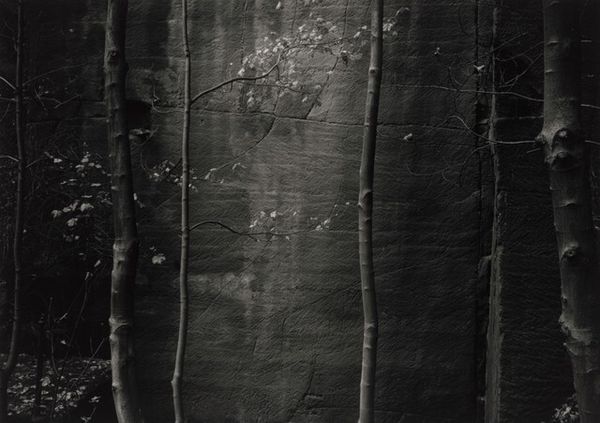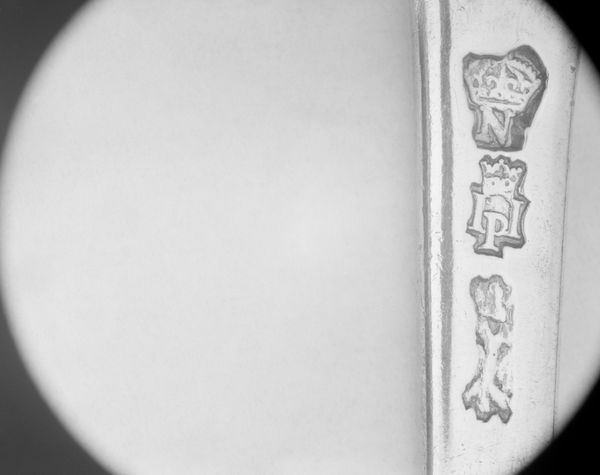
photography, gelatin-silver-print
#
contemporary
#
landscape
#
photography
#
gelatin-silver-print
#
charcoal
#
realism
Dimensions: image: 38.1 × 38 cm (15 × 14 15/16 in.) sheet: 50.3 × 40.3 cm (19 13/16 × 15 7/8 in.)
Copyright: National Gallery of Art: CC0 1.0
Curator: Terry Evans made this captivating gelatin silver print, titled "Rose Hill Cemetery, McPherson County, Kansas," sometime around 1991. It offers an aerial perspective that feels simultaneously intimate and distant. What’s your immediate take? Editor: It feels ancient, somehow. Like looking down at a Roman fort from a drone, or the foundations of some forgotten ritual space. All that charcoal grey adds to this sense of mystery. It is striking and somber. Curator: The high vantage point is key, isn't it? Elevating us above the scene transforms a familiar space, a cemetery, into an abstract composition. It’s like she’s collapsing time, presenting the present and the echoes of the past in a single frame. Editor: And consider the square. That sharp geometrical form of the enclosure, that stands out in the organic lines of the farmland. Squares are traditionally associated with earthly domains and grounded stability, while circles represent the divine, eternity... Curator: Oh, I love that. And that sharp, unwavering shadow of the cemetery wall, feels symbolic, right? A stark boundary. Editor: Absolutely. The shadow gives the impression that this community has existed for ages. Consider the tradition that cemeteries were once places where active members of society hoped that the spirit of the departed would live among them, it's a potent symbol of remembrance, perhaps the past continues to shade and mold present life. Curator: Do you find that geometry cold at all, or do you appreciate the stark formality against the flowing fields? Editor: I am in awe of the starkness, especially with the muted tonal range which provides a gentle balance between its various shapes: the square offset with the linear paths cut in soft arcs through the neighboring terrain, providing a striking harmony with those angular shadows. This place holds stories, history; it carries so much beyond its physical confines. I see strength, persistence. It asks how do we interact with the world while making a space for our own rituals to unfold. Curator: I like the way the image reframes death – not as an end, but as a landscape. Something we return to. A point on a much larger terrain. I was looking for an ending, but perhaps this photographic poem doesn't need one... Editor: ...Maybe just the echo of memory caught in silver. It is nice to think about where we all might end.
Comments
No comments
Be the first to comment and join the conversation on the ultimate creative platform.
